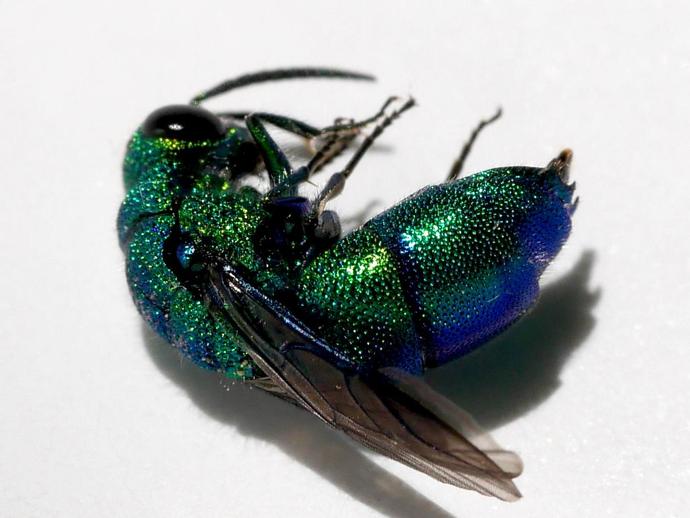June 14, 2020
This beautiful wasp is a member of the family Chrysididae, also known as cuckoo wasps, emerald wasps or jewel wasps. And despite how it looks, it's not dead! These wasps have concave abdomens and can curl up into a ball when they feel threatened (by a camera for example).
You won't find a big, buzzing nest of these wasps anywhere; they're solitary wasps, and they're also parasites, which is how they get the common name "cuckoo wasp." Just like the cuckoo family of birds, they lay their eggs in the nests of unrelated host species!
I generally spot a fair number of these wasps on my back porch when the carpenter bees are out in force because they like to lay their eggs inside carpenter bee galleries. The cuckoo wasp larvae eat the carpenter bee larvae and then enjoy the store of food that was set aside for the carpenter bee. It's a rough system, but if your porch is as riddled with carpenter bee holes as mine is, you tend to gain a new appreciation for these striking little wasps. #BenInNature
This post brought to you by VMNH Corporate Supporter S & K Office Products, Inc.
ABOUT THIS POST
Social distancing can be difficult, but it presents a great opportunity to become reacquainted with nature. While he is working from home, Administrator of Science Ben Williams is venturing outdoors each day to record a snapshot of the unique sights that can be found in the natural world.
NATURE PHOTO IDENTIFICATIONS
If you discover something in nature that you would like help identifying, be sure to message us right here on Facebook with a picture (please include location and date of picture) and we'll have our experts help you identify it!

 Hours & Admissions
Hours & Admissions Directions
Directions

